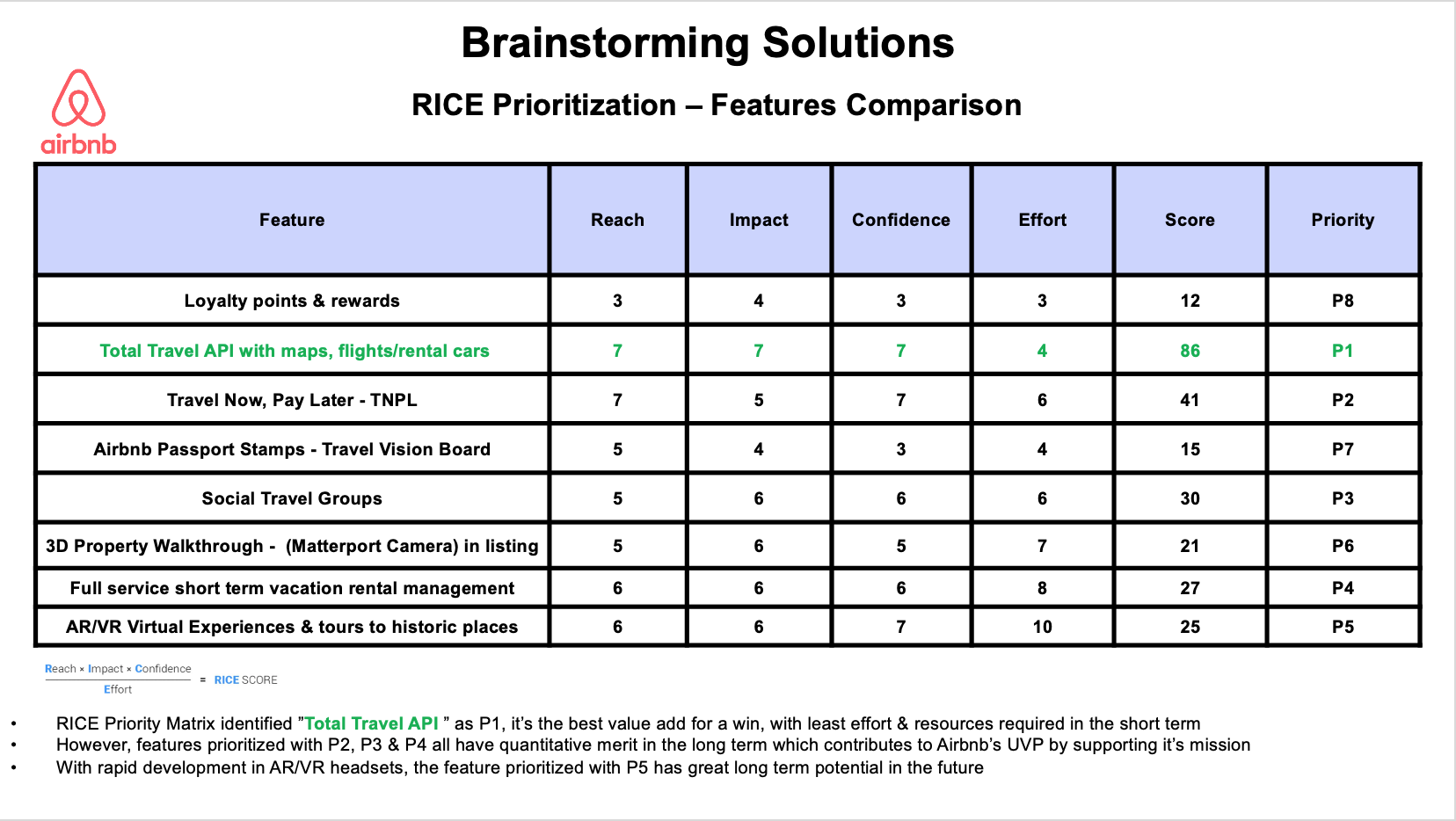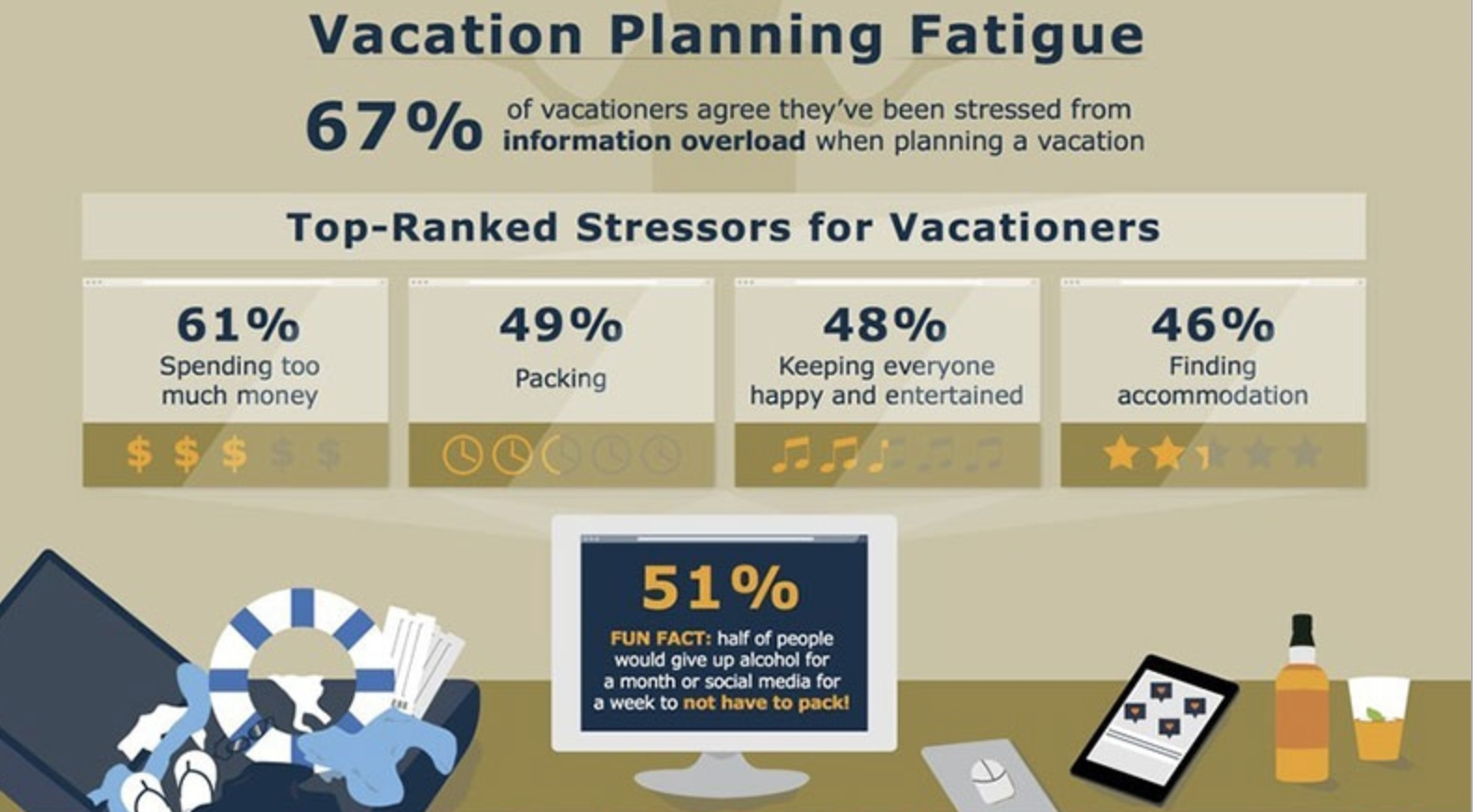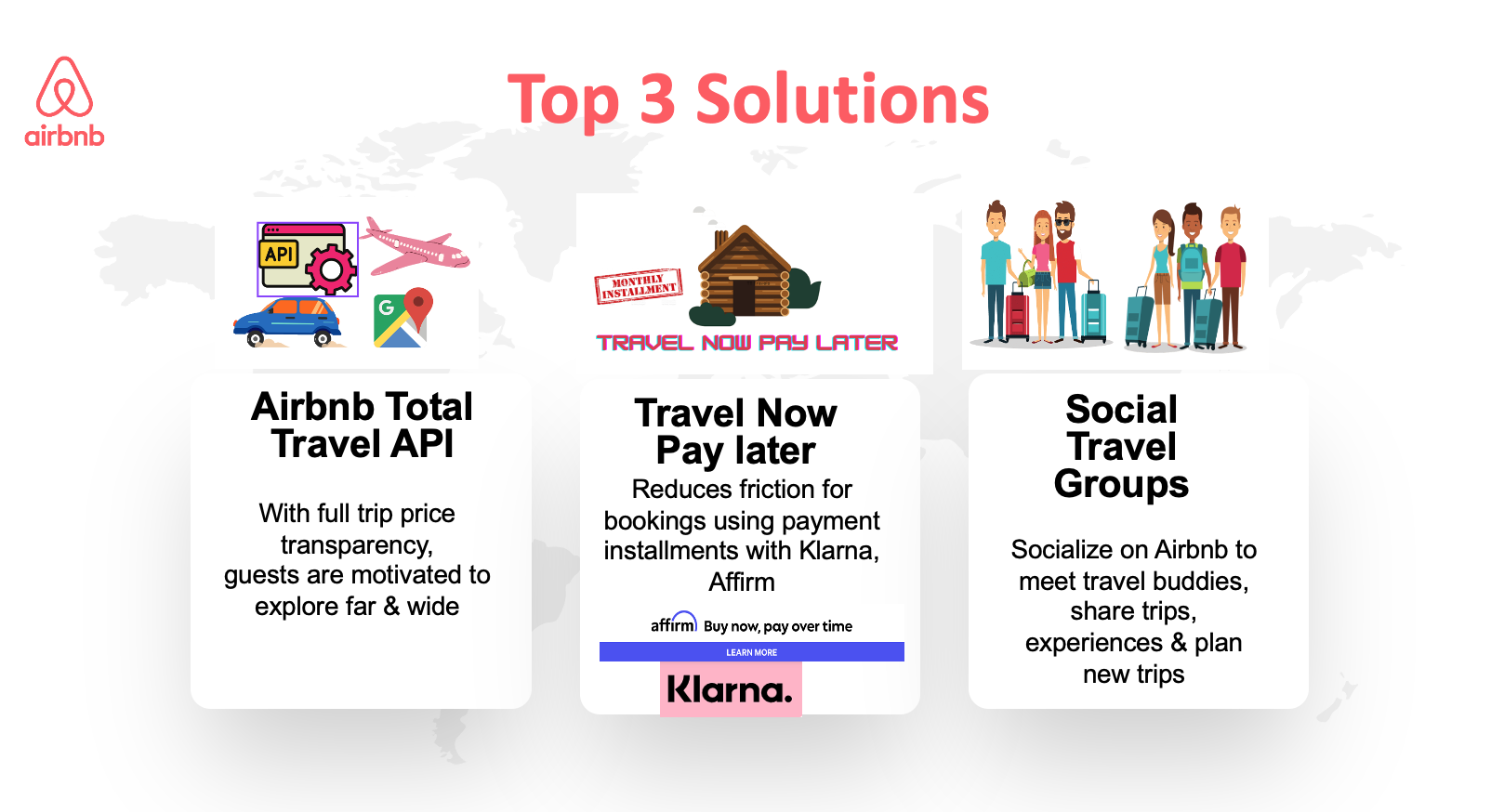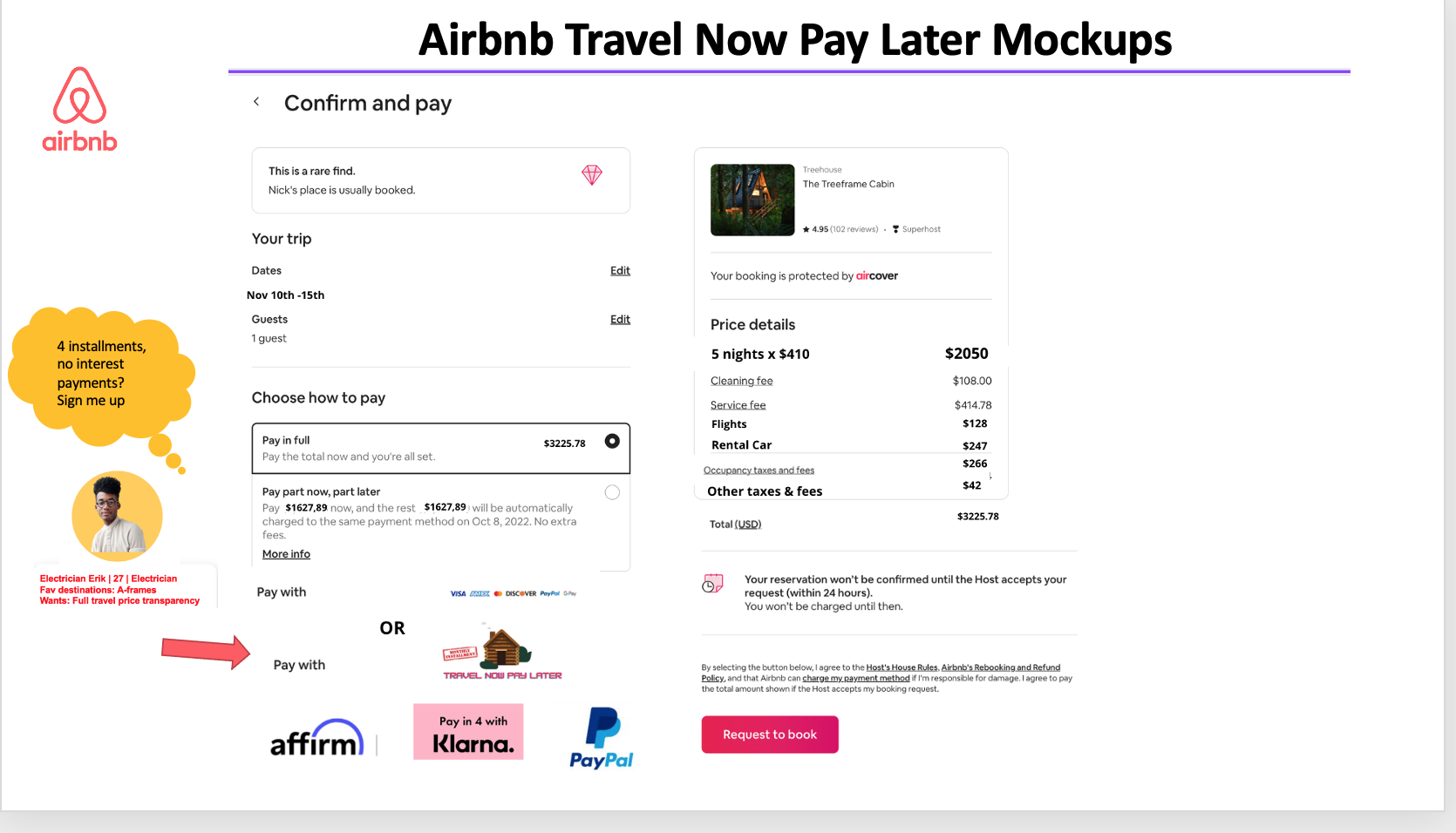Case Study 3: Airbnb
Prompt: Scale Airbnb to a larger audience, build a product to increase engagement and scale growth
Mission:
“To create a world where you can belong anywhere and where people can live in a place, instead of just traveling to it.”
Vision: “Belong Anywhere.”
Image 1: Airbnb Demographics
1. Introduction & Product Background
Airbnb is an online shared economy platform that connects people wanting short-term rentals to homeowners who want to rent temporarily. This ranges from regular people with a spare bedroom to property management companies who lease multiple rentals. Over time the platform has scaled its offerings by partnering with local professionals to expand services and entertainment experiences through events and tours.
They brand themselves as an online travel community, allowing guests to experience belonging anywhere and not just travel to it as a vacation. Airbnb’s UVP is that they have made travel more accessible to the masses to help users benefit from a truly local experience and help hosts benefit from extra income thereby creating a good supply-demand ecosystem. Over time, the number of users has grown on the platform and so have the daily rates for Airbnb, which ideally should suggest better revenue conversion linearly, which is far from the truth from the trends collected over the last 3 quarters and the future guidance through the end of this year.
In this case study, I try to decipher how Airbnb can approach this obstacle to increase engagement while retaining its unique value proposition(UVP) of helping travelers benefit from a truly local end-to-end experience and & help homeowners and hosts in remote locations be discovered to share their culture and home with the world. Hypothesis and solutions are derived based on my own data collection through customer interviews within my network, polls, interviews, and current & future market trends. Since I do not have access to any of the internal data and consumer study reports, I’m relying on the data I’ve collected through personal means to make the best judgment possible.
2. Company Mission and Values, Roadmap, Products
Airbnb’s vision for its products is “Belong Anywhere” and it reflects in the ecosystem of products it develops geared mostly towards individuals who want to travel and hosts who want to rent temporarily. Airbnb has had quite a run-up to find its Product Market Fit over the years, now more than ever it needs to differentiate itself more from the rest of its competitors, to be the unanimous leader in the travel industry.
Image 3: AIrbnb’s statistics with revenue users and nightly rates
3. Market and Competitors Analysis
Image 4: Airbnb’s competitors
4. User Research and Personas
The process of collecting user data is the most critical one for defining a solution that lays the foundation for a future Product Market Fit. The wider the sources, the better data points but they don’t necessarily arrive at congruent conclusions every time. Knowingly or unknowingly, what people say they positively respond to, could be widely different from the ones they actually do in real life. So collecting both qualitative and then quantitative metrics is essential to arrive at optimized solutions using a data-driven approach.
For the scope of this case study, I’ve simplified the process. I interviewed a wide range of people who are current and former Airbnb users and collated the data to transform them into these user personas.
Image 6: Airbnb - User Personas
5. Brainstorming Solutions
Coming up with product solutions starts absolutely with the customer pain points. While it’s tempting to solve every possible problem from every segment, there’s always a tradeoff between risk vs rewards with a market opportunity that dictates what features get built with a priority.
While short-term solutions and fixes have their place in the product cycle, they might not impact the customers immensely or bring everlasting gains to the organization. Hence, building toward solving a big enough problem with a bigger market opportunity by brainstorming moonshot ideas helps the final product land somewhere in the middle of reality, after discounting for unknown complexities/roadblocks ahead.
Image 7: Features prioritized using RICE Framework
6. Prioritization, Tradeoffs for ROI, and Success metrics/KPIs
In the real world, product and feature prioritization is done with abundant amounts of customer studies, surveys, internal & external data with quantitative ranking, and formulating matrices with values directly tied to the customer feedback which align with the organization’s mission and goals. Feature prioritization reduces the risk of building a product that burns resources, in addition to the opportunity costs of not building the product that the customer desired in the first place, conversely improving the probability of a return on investment (ROI) down the line. There are plenty of product prioritization frameworks used to decide which product/feature to build, here are a top few:
a) The Kano Model: Mapped on a 2-dimensional plot with user satisfaction vs functionality, the highest delight and functionality is chosen.
b) The MoSCoW method: Must have, Should have, Could have and Wont have, the best solution bubbles up via feature eliminations.
c) RICE Framework: Reach, Impact, Confidence, and Effort. The feature with the highest formulated RICE score gets the pick.
d) ICE Scoring Model: Impact, Confidence, and Ease. The highest relative average ICE score features bubbles to the top.
e) Opportunity Scoring: Evaluates the feature importance and customer delighter and satisfaction.
f) Weighted Scoring Prioritization: Weighted aggregation of important feature drivers used to quantify the importance of a feature.
When features are chosen to prioritize with any of these frameworks, logically it makes sense put all the focus and resources to pick the highest scoring feature to build. More often than not, it might or might not be the best path to go after strategically. The reason is, that there are plenty more parameters to consider during a product lifecycle like resource interplay, tech debt, scope creeps, competitors pressure with time to market, complexity with the tech stack, engineering resource constraints, and blockages with any or all of those in conjunction.
Considering I don’t have access to all the consumer studies and actual user research, I’m going to rely on the data I have collected, coupled with my intuition for what the future marketplace needs and Airbnb’s current global market positioning to arrive at an informed decision.
6.1 Short to mid-term product to build - Total Travel API with Maps/Flights/Rental cars:
My hypothesis for choosing the Total Travel API with Maps/Flights/Rental cars is primarily rooted in customer empathy and the pain points it’s able to resolve with the value it delivers to the users holistically. For each destination a user wants to travel to, it takes them away from the Airbnb platform to engage their attention elsewhere which becomes the seminal action for the bookings on Airbnb. Not only are their efforts duplicated over and again across multiple locations and dates, but that’s also the time that could have been spent more on Airbnb for more discovery leading to more trips in the future.
Based on data, unknown auxiliary costs are one of the top contributors to vacation planning fatigue which is a real issue and can restrict the way people experience travel. While it can be daunting for some individuals to plan travel, it doesn’t have to remain that way for long. This situation is what Airbnb can leverage, to build a travel product that helps users lower the friction to manage their end-to-end travel journey on their platform, especially when it’s hard to find deals to align with dates.
The more users start to discover this novel feature, the more data points for clustering, filtering, and trend analysis using Airbnbs’s algorithms to have personalized travel suggestions. The success of Airbnb is primarily rooted in the supply and demand of the available stays, so the higher the nightly occupancy the better the company’s growth. The North Star Metric(NSM) will be the occupancy rate across the available postings. It’s a logically metric which predicts the product’s success. Other KPIs and success metrics are listed through the funnel in the GTM strategy section of the blog.
The biggest risk to this feature is to cross-functionally pull data for all personalized trips and build APIs from scratch if they don’t exist, to begin with, across a wide variety of websites for web scrapping dynamic account reads to recalculate the travel plans. But even with the risks involved, when executed strategically and incrementally launched to segmented profiles, the algorithms can be tuned for optimizations, personalization, ranking, and search. This scalable feature is a mutual value add to the user addressing a key pain point and helping Airbnb to differentiate its UVP across all travel platforms.
Image 9: Effort vs Impact & ROI estimation
Image 10: Airbnb Top 3 Problems
Image 11: Top 3 solutions
Image 12: Prioritization of solutions
Image 13: User Journey Map
7. Minimum Viable Product(MVP), A/B testing for Product Market Fit
For building the MVP, it starts with Maps APIs to check the distance from home for domestic travel. Currently, Airbnb only has an option with the grid view but it doesn’t display an exact distance in miles/kilometers. Something which needs extra attention is defining a clear data governance policy around holding and sharing users’ vacation information diligently.
For the system design and algorithms, defining the search ingestion, storage, processing, and orchestration is critical for periodic data pulls from the database or a scheduler that does that automatically. Integrating payments for rental cars/flights can be kept as a separate micro-service.
For the price predictors, starting with supervised models gives us clarity and confidence intervals over the data for booking now versus at a later time. Over time moving to a hybrid model with either ensemble, layered or AutoML pre-trained models helps in better predictions. Additionally having a basic analytics dashboard help to differentiate model behavior and performance based on user profiles.
For model optimizations, there is a wide range of A/B testing available with Bayesian A/B testing, Frequentist A/B testing, Muti-Armed Bandit(MAB), and Impact Estimation running tests. Mapping out the pros and cons for each and testing features routinely should gather enough data to fine-tune the strategy with a data-driven approach and a clear hypothesis with high confidence intervals on treatment and control groups to optimize the best models across user profiles.
Image 14: MVP and Long Term Vision of solutions
8.Wireframes & Mockups:
Image 15: Wireframes - current website experience
Image 16: Wireframes - flights & rental cars prices integrated
Image 17: Wireframes - flights & rental cars prices integrated + optimized travel deals with web scrapping
Image 18: Wireframes - Flexible payment options with Travel Now Pay later (TNPL)
9. Go-To-Market Plan, Product growth & scaling
Go-to-Market(GTM) is basically a step-by-step plan with every detail to successfully launch the product. Having a good GTM strategy helps in identifying the market problem for a refined set of users and delivering personalized value to them by positioning the product as their solution. In the real world defining TAM, SAM, SOM, and ICP numbers are highly critical in determining the market share of the problem, without which every innovative solution will just fall flat. It involves referring to accurate data sources to determine the market size and the portion controllable by the product. For the scope of this case study, I’ve used justifiable numbers from the estimations shown below.
The strategy for this product is very clear, the drop in booking conversion rates from the top of the funnel can be accounted to the travel arrangement unknowns at different price points deterring users from not going through with the booking. Providing the best resources to lower friction and the best deals possible, helps them plan their trip ahead and explore far and wide places.
Image 19: Airbnb current experience vs proposed frictionless product strategy for increased engagement
Image 20: Airbnb current experience vs proposed frictionless product strategy for increased engagement
Image 21: GTM Statistics
9.1) Revamp the strategic narrative aka manifesto with a clear new value proposition
Launching the feature with a purpose, aka manifesto plays a crucial role in getting the product to the hands of the users. It needs to be catchy, and convey exactly the message the product is solving which the users resonate with vividly. Yes, that’s a lot of things in one, but think of all the eye catchy slogans from great products, the fact that you can recollect so of them shows powerful this step is in connecting with the audience.
Having a call to action like “Experience is a new luxury” further deepens the connection with the users to help them explore the product.
Image 22: GTM Strategy
9.2) Identifying the initial customer profiles, average customer value and ideal customer profiles
While the target persona is fairly well defined, for the product to work with a high engagement rate, it needs to be exposed to the right audience aka ideal customer profile(ICP). Using various data sources to target these user segments helps the product to get traction very rapidly.
9.3) Execution, Sales, Marketing and Customer Acquisition Costs
Pinning down the exact customer acquisition cost (CAC) with a pricing model to helps encourage discoverability of the product, additionally allotting a budget to regain lost customers and welcome them back to retry the improved product can help boost engagement.
Image 23: Success Metrics and KPI’s
10. Summary
In this case study, I’ve tried to decipher how Airbnb can approach the problem of stagnating revenue growth even with its growing users and increasing average prices per night with the help of total travel API and TNPL. While there isn’t a perfect solution, hedging risks, managing tradeoffs, and finding product-market fit to satisfy customer needs are the most preferable options to release new products. This solution addresses a core user pain point, which provides smoother frictionless discoverability, trip planning, and booking end-to-end experience.
Out of all the viable solutions, Total Travel API and TNPL has bubbled up as the top solution through my framework and analysis. Airbnb by evolving its UVP with end-to-end travel boosted features could draw more users to the top of the funnel which increases the probability of booking success rates. While there could be some anticipated friction with a few user segments with privacy worries across end-to-end travel and payments, when addressed well it can be put away, but the idea does have merit and long-term potential when strategically implemented.
Image 24: Airbnb Tree Executive Summary
Outro:
Airbnb is positioned well for this breakout travel era of the post-pandemic roaring 2020s, there is a big validated market for unique experiences, redefining what travel looks like in the new world, exploring far and wide to less discovered yet very instagramable and touristy locations. Airbnb just announced a big budget that encourages hosts to create unique destinations, yet there isn’t a clear means to get to those places efficiently or economically through the customer journey funnel to complete bookings.
Airbnb can focus next on driving more value to its users, facilitating end-to-end travel experiences to reestablish its UVP to distinguish itself among growing multipliers in the same travel segment. Can Airbnb make the most during the traveling gold rush to help its users, only time will tell….
How would you solve Airbnb’s problem? What would you do differently? Write to me with your solution, I’d love to hear from you.
Here is the TLDR version in a pitch deck.











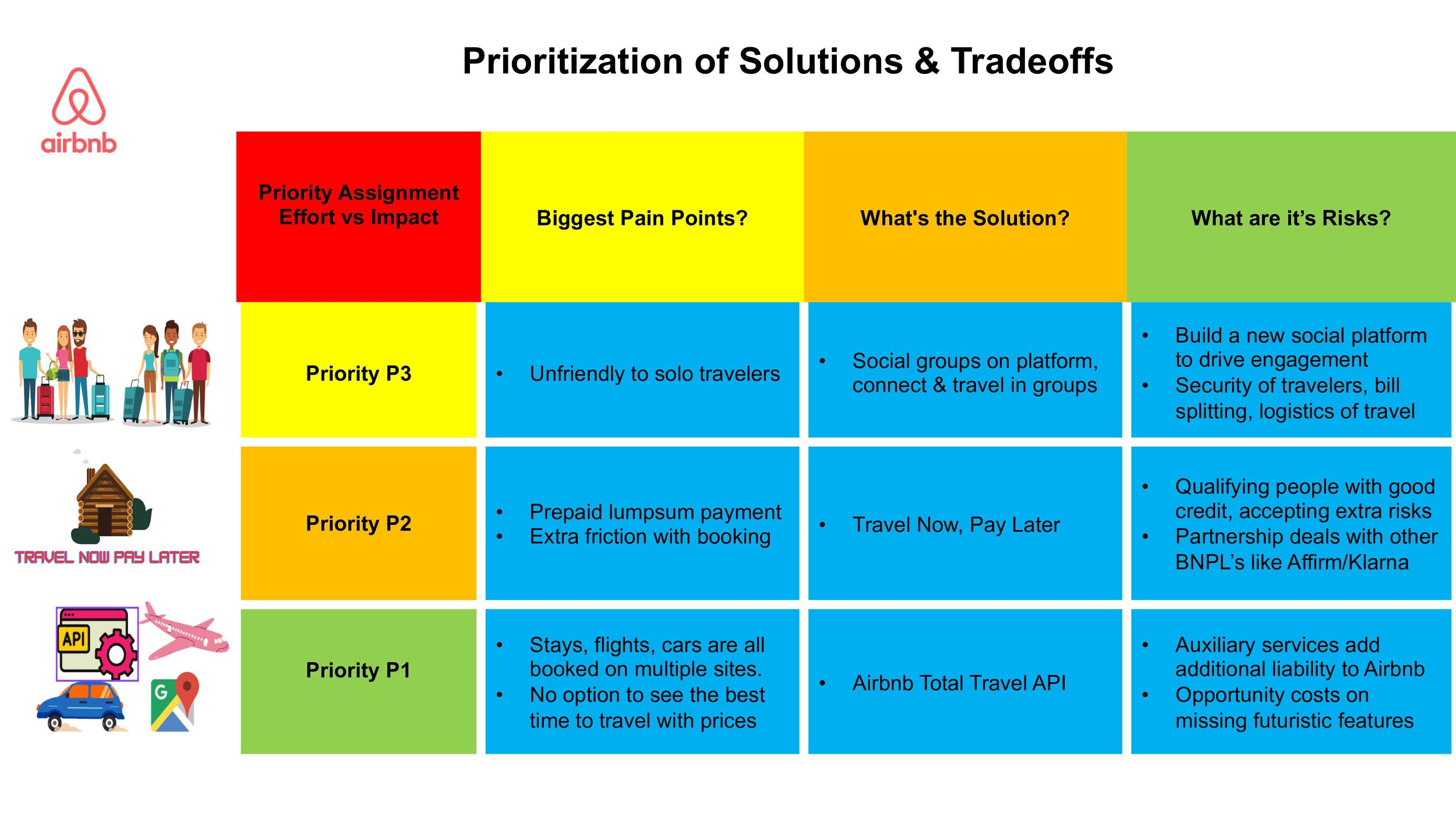













Disclaimer: All opinions shared on this blog are solely mine and do not reflect my past, present or future employers. All information on this site is intended for entertainment purposes only and any data, graphics and media used from external sources if not self created will be cited in the references section. All reasonable efforts have been made to ensure the accuracy of all the content in the blog. This website may contain links to third party websites which are not under the control of this blog and they do not indicate any explicit or implicit endorsement, approval, recommendation or preferences of those third party websites or the products and services provided on them. Any use of or access to those third party websites or their products and services is solely at your own risk.









